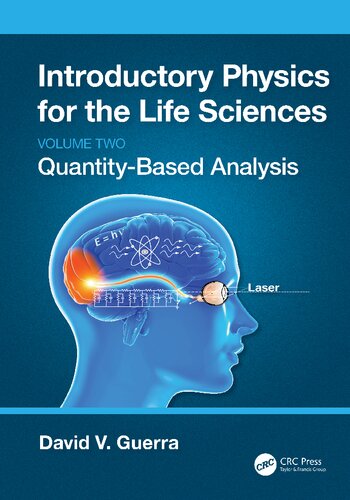

Most ebook files are in PDF format, so you can easily read them using various software such as Foxit Reader or directly on the Google Chrome browser.
Some ebook files are released by publishers in other formats such as .awz, .mobi, .epub, .fb2, etc. You may need to install specific software to read these formats on mobile/PC, such as Calibre.
Please read the tutorial at this link: https://ebookbell.com/faq
We offer FREE conversion to the popular formats you request; however, this may take some time. Therefore, right after payment, please email us, and we will try to provide the service as quickly as possible.
For some exceptional file formats or broken links (if any), please refrain from opening any disputes. Instead, email us first, and we will try to assist within a maximum of 6 hours.
EbookBell Team

4.1
60 reviewsThis textbook provides an accessible introduction to physics for undergraduate students in the life
sciences, including those majoring in all branches of biology, biochemistry, and psychology and
students working on pre-professional programs such as pre-medical, pre-dental, and physical
therapy. The text is geared for the algebra-based physics course, often named College Physics in
the United States.
The order of topics studied in this volume requires students to first understand a concept, such as
the conservation of energy, momentum, voltage, or current, the change in a quantity such as
entropy, or the rules of ray and wave optics. Then, students apply these concepts to solve problems
in the areas of thermodynamics, electrical circuit, optics, and atomic and nuclear physics.
Throughout the text these quantity-based applications are used to understand systems that are
critical to the understanding of biological systems, such as the entropy of evolution, the signal
down the axon of a nerve cell, the optics of the eye, and the operation of a laser.
This is part 2 of a two-volume set; volume 1 introduced students to the methods of mechanics and
applied these problem-solving techniques to explicitly biological topics such as the sedimentation
rate of red blood cells in haemoglobin, the torques and forces on a bacterium employing a
flagellum to propel itself through a viscous fluid, and the terminal velocity of a protein moving in a
gel electrophoresis device.
Key features
• Organized and centered around analysis techniques, not traditional mechanics and E&M.
• Presents a unified approach, in a different order, meaning that the same laboratories,
equipment, and demonstrations can be used when teaching the course.
• Demonstrates to students that the analysis and concepts they are learning are critical to the
understanding of biological systems.